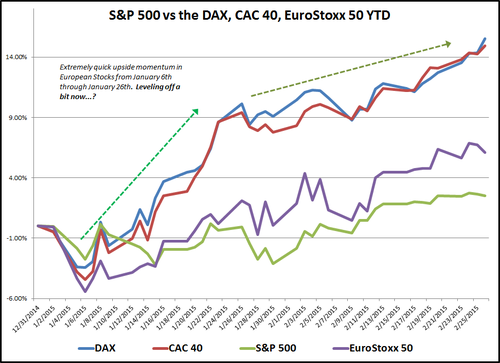France ETFs Explained (CAC 40) (CAC EWQ)
Post on: 26 Август, 2015 No Comment

The CAC 40 is the most popular measure of stocks on the Euronext Paris (formerly the Paris Bourse) and could be considered France’s equivalent of America’s Dow Jones Industrial Average (DJIA ). The index is made up of the largest 40 companies listed in France screened by market capitalization, trading activity, size of balance sheet and liquidity. The multinational reach of the companies listed on the CAC 40 makes it the most popular European index for foreign investors. The CAC 40 started with a base value of 1,000 in December 1987 and continued to operate on the total market capitalization system until 2003 when it was changed to free float adjusted market capitalization.
The CAC 40 not only acts as the prime benchmark for Euronext Paris, but also serves as an underlying index for exchange-traded funds. structured products. funds, futures and options. Companies that comprise the CAC 40 index include Total SA (TOT ), BNP Paribas SA (BNP ), Orange S.A. (ORAN ), Sanofi S.A. (SNY ), Société Générale S.A. (GLE ) and Arcelor Mittal (MT ). There is a 15% weighing cap on all index constituents. (For related reading, see: The Hidden Differences Between Index Funds .)
Exposure Via ETF
A number of exchange-traded funds (ETFs ) follow the CAC 40. Among them are:
The Lyxor ETF CAC 40 aims to provide low-cost, large-cap exposure to the Paris Bourse. It’s suitable for all categories of investors looking to add some French flavor to their core portfolio. The lion’s share of the fund is invested in French stocks, with small allocations to Luxembourg, Belgium and the Netherlands. The top five sector allocations are consumer goods (18.1%), financials (17.1%), industrials (17%), healthcare (12.4%) and oil and gas (11.5%). The fund was launched in 2000 and holds about $3.7 billion. It carries an expense ratio of 0.25%.
• EasyETF CAC 40 ETF (E40 )
The EasyETF CAC 40 ETF launched in 2005 and aims to replicate the performance of the CAC 40 index. It has a recommended investment horizon of five years (as per its prospectus), holds about $340 million and carries an annual charge of 0.25%. Its top sector allocations are consumer goods, financials, industrials, oil and gas and healthcare. The fund has a cumulative tracking error of 0.41% and an annualized tracking error of 2.92%.
The objective of the Amundi ETF CAC 40 is to mirror the performance of CAC 40 index without regard to market trends. The fund has approximately $925 million under management and carries an expense ratio of 0.25%. The fund’s top holdings are Total SA, Sanofi, BNP Paribas, LVMH Moët Hennessy • Louis Vuitton S.A. and financial service company AXA. Its top 10 holdings account for more than half of the fund’s assets.
The DBXT CAC 40 ETF launched in 2008 and holds $37 million. The fund’s 10% expense ratio is on the lower side compared to its peers. Its holdings don’t exactly mimic the underlying CAC 40 index. For example, it allocates approximately 3% to Spanish, Belgian and Dutch equities. The ETF’s top sectors include consumer goods (18%), financial services (17.1%), industrials (16.6%), health care (12.5%) and oil and gas (11.2%).
• ComStage ETF CAC 40 (PC40 )
Launched in 2010, this ETF has about $10 million under management and carries an expense ratio of 0.20%. Its top sector allocations are financial services, industrials, healthcare, consumer cyclicals and consumer defensive; these sectors account for about 60% of the fund.
The Bottom Line
In addition to the exchange-traded funds listed above, there are few leveraged and short ETFs (also called inverse or bear ETFs) that track CAC 40. Leveraged and short ETFs are more risky as compared to regular ETFs, and thus are not suitable for all investors. Another option that can be explored by investors looking to invest in the same region is iShares MSCI France UCITS ETF (EWQ ). The fund was launched in September 2014 and tracks the MSCI French Index instead of CAC 40. (Related reading, see: Strategy-Based ETFs to Consider in 2015 .)














